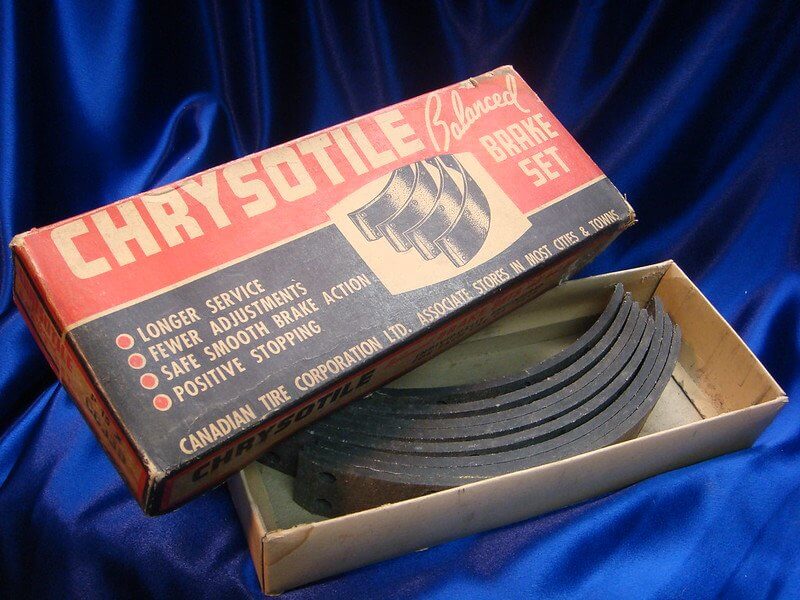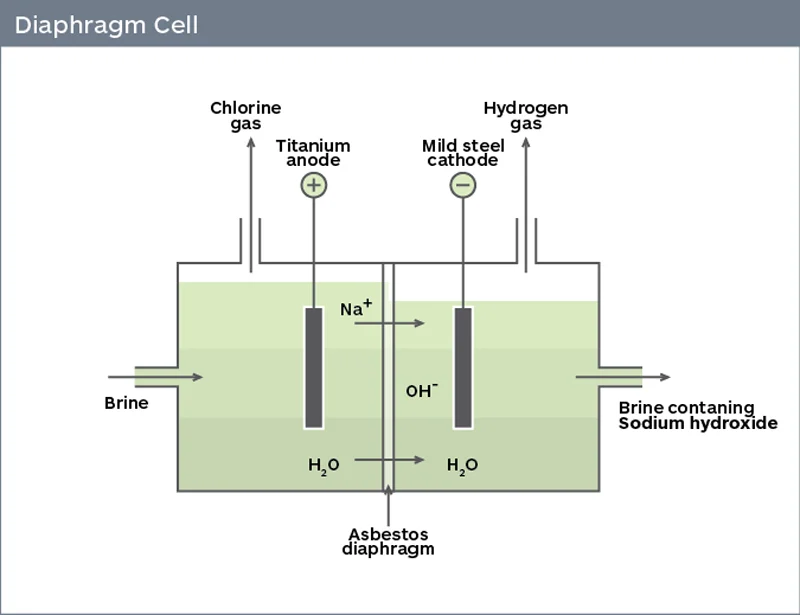Since this is not a ban and 40,000 Americans die annually from asbestos-caused diseases it is even more important that we Tell Congress to Ban Asbestos! The Asbestos Disease Awareness Organization (ADAO) has developed a coalition of firefighters, public health, and safety officials who are calling on the public’s support in their decades-long fight to convince the U.S. Congress to ban deadly asbestos. Now, you have an opportunity to write your own message to US Senators and US Representatives to ask them to support the Alan Reinstein Ban Asbestos Now Act (ARBAN). This act would prohibit the manufacture, processing, use, and distribution of commercial asbestos in commerce - a known carcinogen that is still widely in use across the U.S. Make your voice heard on this link. It takes only a minute.
 |
| Chrysotile Asbestos |
Before we go into this rule, let's remember we still have the Significant New Use Rule (SNUR) that came out on April 25, 2019. This rule did not ban any forms of asbestos but allowed manufacturers (including importing), or processors of asbestos (including as part of an article) to seek permission from the Environmental Protection Agency (EPA) for the significant new use (it included a list of uses that would need permission).
The final rule can be found on EPA's website here. The document consists of 40 pages (pages 21970 to 22010). However, the rule is found on page 22005 (35 pages after the beginning of the document, meaning the rule consists of only 5 pages). Subpart F - Chrysotile Asbestos starts with the different Sections of the Rule:
- 751.501 General
- 751.503 Definitions
- 751.505 Manufacturing, processing and commercial use of chrysotile asbestos diaphragms in the chlor-alkali industry.
- 751.507 Certification of compliance for the chlor-alkali industry.
- 751.509 Other prohibitions and restrictions of the manufacturing, processing and commercial use of chrysotile asbestos.
- 751.511 Interim workplace controls of asbestos exposures.
- 751.513 Disposal.
- 751.515 Recordkeeping.
As you can see from this list, these are the Certain Conditions of Use. Let's look at 751.505 diaphragms (means semipermeable diaphragms, which separate the anode from the cathode chemicals in the production of chlorine and sodium hydroxide (caustic soda).
- Section (a) states, after May 28, 2024, all persons are prohibited from manufacture (including import) of chrysotile asbestos, including any chrysotile asbestos-containing products or articles, for diaphragms in the chlor-alkali industry.
- Section (b) states, after May 28, 2029, all persons are prohibited from processing, distribution in commerce, and commercial use of chrysotile asbestos, including any chrysotile asbestos-containing products or articles, for diaphragms in the chlor- alkali industry, except as provided in paragraphs (c) through (d) of this section.
Here is the devil in the details:
- Section (c) Any person who meets all of the criteria of this paragraph (c) may process, distribute in commerce and commercially use chrysotile asbestos, including any chrysotile asbestos- containing products or articles, for diaphragms in the chlor-alkali industry at no more than two facilities until May 25, 2032: (1) On May 28, 2024, the person owns or operates more than one facility that uses chrysotile asbestos in chlor-alkali production; (2) The person is converting more than one facility that the person owns or operates that as of May 28, 2024 uses chrysotile asbestos in chlor-alkali production from the use of chrysotile asbestos diaphragms to non-chrysotile asbestos membrane technology, and by May 28, 2029, the person has ceased all processing, distribution in commerce and commercial use of chrysotile asbestos at one (or more) facility undergoing or that has undergone conversion to non-chrysotile asbestos membrane technology; and (3) The person certifies to EPA compliance with the provisions of this paragraph, in accordance with §751.507.
- (d) Any person who meets all of the criteria of this paragraph (d) may process, distribute in commerce and commercially use chrysotile asbestos, including any chrysotile asbestos- containing products or articles, for diaphragms in the chlor-alkali industry at not more than one facility until May 26, 2036: (1) On May 28, 2024, the person owns or operates more than two facilities that use chrysotile asbestos in chlor-alkali production; and (2) The person is converting more than two facilities that the person owns or operates that as of May 28, 2024 use chrysotile asbestos in chlor-alkali production from the use of chrysotile asbestos diaphragms to non-chrysotile asbestos membrane technology: (i) By May 28, 2029, the person has ceased all processing, distribution in commerce and commercial use of chrysotile asbestos at one (or more) facility undergoing or that has undergone such conversion; and (ii) By May 25, 2032 the person has ceased all processing, distribution in commerce and commercial use of chrysotile asbestos at two (or more) facilities undergoing or that have undergone conversion to non-chrysotile asbestos membrane technology; and (3) The person certifies to EPA compliance with the provisions of this paragraph, in accordance with §751.507.
So other words we have a ban on the manufacture/importing of chrysotile asbestos to make diaphragms but the use of chrysotile asbestos diaphragms is not banned until 2036. In addition, 751.509 Other prohibitions and restrictions of the manufacturing, processing, and commercial use of chrysotile asbestos covers:
- Prohibit the manufacture (including import), processing, use, distribution in commerce and commercial use of chrysotile asbestos, including any chrysotile asbestos-containing products or articles, for sheet gaskets in chemical production and require interim workplace controls for certain commercial uses after May 27, 2026. With exceptions for titanium dioxide production until May 28, 2029, and processing nuclear material at the Savannah River Site until December 31, 2037.
- Prohibit the manufacture (including import), processing, distribution in commerce, and commercial use of chrysotile asbestos, including any chrysotile asbestos-containing products or articles, for oilfield brake blocks, aftermarket automotive brakes, and linings, other vehicle friction products, and other gaskets after November 25, 2024;
- Prohibit the manufacture (including import), processing, and distribution in commerce of chrysotile asbestos, including any chrysotile asbestos-containing products or articles, for consumer use of aftermarket automotive brakes and linings and other gaskets after November 25, 2024.
- All of these have exceptions to the distribution in commerce prohibition if they are already installed.
 |
| https://www.asbestos.com/occupations/auto-mechanics/ |
Section 751.511 Interim workplace controls of asbestos exposures is an interesting section considering it's stepping on the toes of the Occupational Safety and Health Administration (OSHA). This section applies to the processing, and commercial use of chrysotile asbestos, including any chrysotile asbestos-containing products or articles, for chrysotile asbestos diaphragms in the chlor-alkali industry; and to the commercial use of chrysotile asbestos sheet gaskets for titanium dioxide production. The section establishes an exposure limit called the Interim Existing Chemical Exposure Limit (ECEL):
- Beginning November 5, 2024,....no person is exposed to an airborne concentration of chrysotile asbestos in excess...0.005 fibers per cubic centimeter (f/cc) as an 8-hour time-weighted average (TWA). Remember the OSHA Permissible Exposure Limit for asbestos is 0.1 f/cc as an 8-hour time weighted average. The ECEL is a 20 times reduction from the PEL.
- Requires initial (performed as of May 28, 2024, and no later than November 25, 2024) & periodic exposure monitoring (performed within three months or six months based on previous results).
- Method of Monitoring utilizes OSHA 1910.1001 Appendix A, OSHA method ID-160, or the National Institute of Occupational Safety and Health (NIOSH) 7400 method. Allowance for the NIOSH 7402 method to adjust the analytical result to include only chrysotile asbestos.
 |
| Personal Sampling Pump |
- If exposure monitoring indicates the exposure is above 0.00view 5 f/cc and less than or equal to 0.05 f/cc. The employer must provide either a half-mask supplied air (SAR) or airline respirator operated in demand mode or a half-mask self-contained breathing apparatus (SCBA) respirator operated in demand mode.
- If exposure monitoring indicates the exposure is above 0.05 f/cc and less than or equal to 0.125 f/cc. The employer must provide a loose-fitting facepiece supplied air (SAR) or airline respirator operated in continuous flow mode.
 |
| Supplied airline respirator |
It is obvious from these respirator selections EPA is reaffirming that there is no safe exposure level to asbestos. For those of us who remember the EPA's and NIOSH's White Book "A Guide to Respiratory Protection for the Asbestos Abatement Industry", remember that this quote was in that book:
"Respirators which use filters to remove contaminants from the air do not provide as high a degree of protection for workers as respirators which supply clean pressurized air to the workers from a protected source."
Realize these restrictions are stricter than OSHA requirements and we wonder what this means for Part 2 of this evaluation process when EPA will be looking at Legacy issues?
Related articles
- The National Law Review - EPA Bans Ongoing Uses of Asbestos https://www.natlawreview.com/article/epa-bans-ongoing-uses-asbestos
- ADAO's FAQs and Quotes on EPA Part 1 Chrysotile Asbestos Rule
https://www.asbestosdiseaseawareness.org/newsroom/blogs/faqs-and-quotes-on-epa-part-1-chrysotile-asbestos-rule/






No comments:
Post a Comment